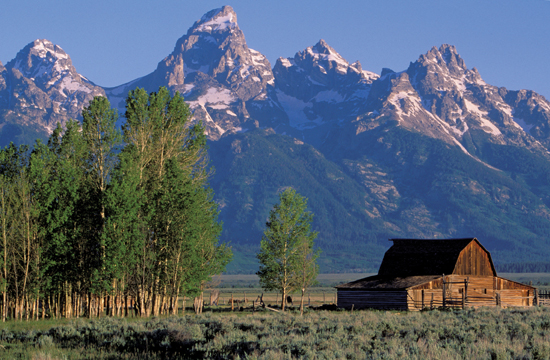
Tim O’Donogue, Coordinator, Jackson Hole & Yellowstone Sustainable Destination Program and GSTC Early Adopter Destination Liaison for Teton County
Teton County has a significant history of stewardship dating back to 1872 with the creation of the world’s first national park, Yellowstone National Park. This achievement was followed by the establishment of the Caribou-Targhee and Bridger-Teton National Forests, the National Elk Refuge, Grand Teton National Park, Wild & Scenic River status for the Snake River. Our committment includes working to protect much of the Wyoming Range, including buying out gas exploration leases.
This week marks the one year anniversary of Teton County's participation in the GSTC Early Adopters Program. In this program, our community’s sustainability efforts were evaluated according to the most widely accepted and highest standards for sustainability for destinations. In addition to worldwide publicity for our efforts, we received a report documenting the results of an evaluation of our community’s performance according to these standards. The results of the evaluation were that we met approximately half of the 120 applicable indicators for sustainability with strengths in natural and cultural preservation and environmental management, and needs for stronger destination management and planning. The report stated that while there are good efforts being made individually, our community has no program or organization that integrates and unifies these efforts, and works to ensure that sustainability is integrated into the planning and operations of the public and private sectors of our community.
The conclusion in the GSTC report was that “Teton County more than any other place in the world has the potential to become a leader as a sustainable destination” and that we have the natural capital, human capacity, and financial resources to realize this potential. In order to fulfill that potential, strive towards greater levels of sustainability, and be a global leader as a sustainable destination, we developed the Jackson Hole & Yellowstone Sustainable Destination Program. The purpose of this program is to strengthen, sustain, and balance the programs, policies, and practices for environmental stewardship, social responsibility, and economic vitality in and of Teton County, Wyoming. This program has been developed by volunteers from some of the key community stakeholders and will be joined by over 60 other stakeholders for its implementation, including federal and local government, nonprofits, private businesses, citizens, and visitors.
The goals of the program are to:
Create, implement, and maintain an action plan to strive towards and fulfill the purpose and vision of the Program
Facilitate the networking and collaboration of stakeholders
Serve as a source of information, training, and programming for stakeholders
Create and maintain a platform for integrating and providing information on the sustainability programs, policies, tools, and practices in Teton County, Wyoming
Educate and promote the principles of sustainability to the public, governmental organizations, nongovernmental organizations, private industry, and visitors
Provide an interface and serve as a liaison between the Program and programs and organizations outside of Teton County, Wyoming
A key focus of the program in its first 12 months will be to coordinate, unify, and strengthen the sustainability outreach and education programs being conducted by community stakeholders
Specifically, the project will:
Strengthen and make more available organization and business sustainability training, education, and certification opportunities
Increase the number of organizations and businesses that have Environmental Management Systems or sustainability management programs in place
Publish reports to community sustainability stakeholders, residents, visitors, and media on the state of sustainability and tourism in Teton County
Create opportunities and mechanisms for soliciting and strengthening community and visitor feedback on sustainability and tourism
Strengthen tour guide, operator, other business, and visitor support of natural and cultural resource protection through coordinating and supporting existing and new programs
Generate content for incorporation into local, state, and federal government; nongovernmental organization, and private business sustainability education and training, marketing and promotions, communications and outreach efforts
Elevate the tourism sector’s awareness of the interaction between climate change and tourism



